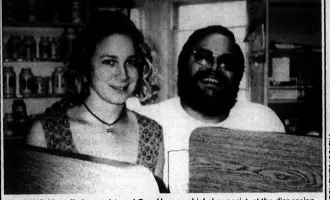
Command Your Audience
You do not have to show up to every fight you are invited to.
This might sound obvious until you imagine how it feels to be in front of an audience giving a talk. Someone raises their hand and says, “I just don’t understand how this is relevant or why I should be interested.”
On Oct. 31, Naledi Saul, Director of the Office of Career and Professional Development gave a presentation in Mission Hall on how to handle these kinds of interruptions while maintaining the flow of a talk.
Drawing from the book “The Gentle Art of Verbal Self Defense,” Saul’s advice was relevant for anyone who has been nervous about how to handle the audience. The lessons could be applied to chalk talks at job interviews, dissertation defenses, grand rounds, or conferences.
The first thing Saul recommended is establishing beforehand how to handle questions. While introducing the subject of a talk, the speaker can set expectations.
Some examples included:
“I ask that everyone hold questions until the end, and I promise to leave at least 15 minutes for Q&A.”
“I welcome questions throughout my presentation.”
“If you have to leave before my presentation ends, please note that I have included my email at the bottom of my slides. Please reach out with comments or questions.”
However, people are almost always going to raise their hands during the talk itself, so Saul suggested trying to remind the audience of what they heard earlier.
Immediately calling on someone and answering their question weakens the expectations set up at the beginning of a talk, so it is important to first decide whether to take a question at all.
An important strategy here can be delaying, said Saul.
This might involve saying something along the lines of, “I see there are some questions already. It’s great that you guys are excited about this material, but in the interest of time I will ask you to hold those questions until the end.”
Alternatively, you might invite someone into discussion by saying, “I see we are a little ahead of time, so I can take a question.”
Once you’ve decided to take a question, Saul suggested listening to the question and then pausing for a moment before answering.
“I'm assessing the situation, I’m centering myself, and then I’m engaging.”
There will be some questions you can answer immediately, while others you can offer to answer later in the presentation when they are more relevant.
As Saul said, “When is it optimal for you to answer that question?” If the question is especially dense or irrelevant to the rest of your presentation, you can even suggest that the person come up after the talk and speak one-on-one.
Finally, there are the strategies to deal with bad eggs in the audience, those audience members that ask disrespectful questions which are not phrased in a respectful or collegial way.
“There are sometimes people in the audience who want to have a fight,” said Saul. “You do not have to show up to every fight you are invited to.”
Of course, if the person asking has seniority, you may need to answer the question instead of using a delaying tactic. Saul has a strategy for this scenario as well.
“[Y]ou have some power about where you have that fight, when you have it, how you frame it, who else you involve,” she said.
It can be easy to feel personally attacked, but that can lead to overcompensation and defensiveness.
Saul recommended keeping in mind that most of the audience wants to hear a good talk. She gave the following script as an example of how to control a potentially explosive situation.
Audience Member: “I just don’t understand how this is relevant or why I should be interested.”
Presenter: “One way I hear your question is, what’s the impact on this research on my field? Or in the world? Here’s how I answer that. Right now we can do X. However, the problem of Y still exists. My goal is to do Z to solve this problem.”
Saul emphasized that a presenter should try to act as both an expert and a shepherd.
Answering questions with expertise is important, but actively shepherding the audience is at least as important in teaching them something new.
Slides from this presentation include extensive examples of questions and responses. They are available online at career.ucsf.edu/QandA.
Stay tuned for other events hosted by the Office of Career and Professional Development.
Upcoming events: “Interviewing while Pregnant” on Nov. 20 and “Negotiating your Faculty Job Offer” on Dec. 6.


